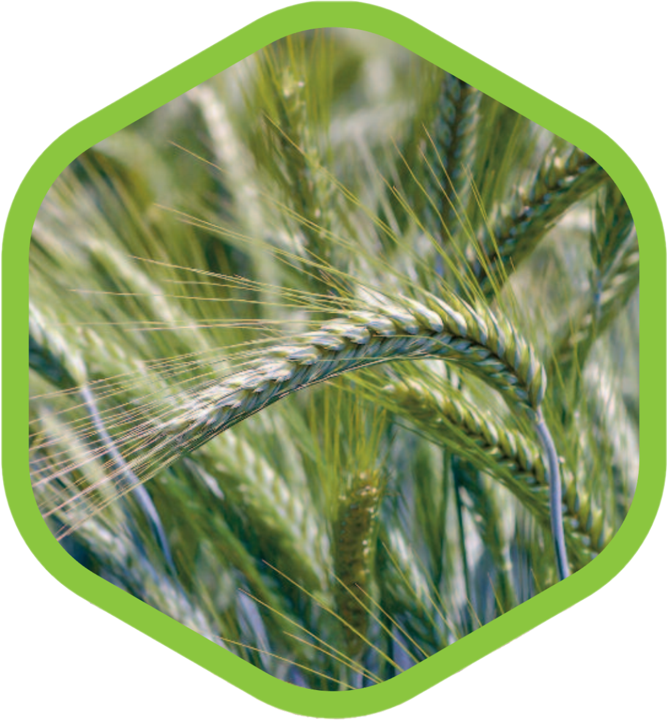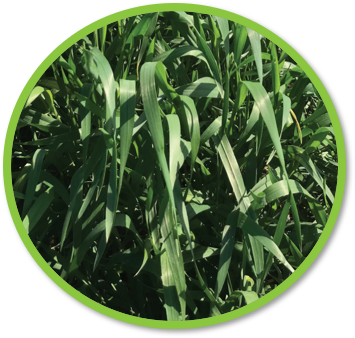Winter Cover Crop in Your Rotation
Options for Forage or Grain
Planting a winter cereal crop such as fall cereal rye or winter triticale in the fall is the earliest way to a forage harvest the following spring. Since winter cereal crops grow at the lowest temperature (3°C), they don’t take long to establish creating a living cover crop for erosion control, weed suppression but most importantly it will continue to feed the soil microbe late into the fall and start again very early the following spring producing a large quantity of forage in mid to late May. This can be early enough to be followed by corn silage or grain corn, a warm season forage crop such as sorghum sudangrass or soybeans as a cash crop.
Winter Barley will be earlier than winter wheat and ready to harvest middle of July. It’s a great option for early grain harvest that can be followed with another forage crop of sorghum sudangrass or prepare the field for summer seeding alfalfa. The earlier harvest may allow more time for the volunteer cereal to germinate and be terminated prior to summer seeding by mid-August. Also, a great source of straw as it will yield more straw than winter wheat.
Winter Triticale is quickly becoming the preferred choice for livestock producers looking for quality feed. Winter triticale, being a cross between rye grain and wheat, will be 1 week to 10 days later than cereal rye in maturity allowing a bigger window to harvest at the ideal stage for quality. Harvesting at the flag leaf stage will have the highest quality and optimum yield versus harvesting at the boot stage. Winter triticale does not have the allelopathic effect that fall rye can have on corn yield which is greatly unknown and misunderstood.

XTR Brand Winter Triticale combines two top producing extremely winter hardy varieties for maximum forage yield. XTR can yield as much as 4 tons/acre DM silage out yielding other winter triticale varieties (13) by 20% and 2 fall rye varieties by 50% in US trials. Below are some key points to achieve high quality forages from XTR Brand Winter Triticale:
Plant on time – Early seeding will provide more tillering and more yield. Ideal planting time is September 1 - 15 and up to the end of September. Rule of thumb is to plant 10 days to 2 weeks earlier than the winter wheat seeding date in your area. If unable to plant along this timeline still proceed with planting as reduced yield is better than no yield and you will still reap the soil health benefits as a cover crop.
Seeding Rate – 100 lb./acre. Research in NY by Tom Kilcer has not seen any advantage to planting over 100 lb./acre even if planting late.
Fertility – Fall fertility is necessary for establishment, whether from manure or dry fertilizer followed with 100 lb. actual nitrogen and sulfur in the spring.
Seeding Depth – 1 ¼ – 1 ½ inch deep into a firm seed bed and pack afterwards if necessary to ensure good seed to soil contact.
Harvest – Harvest at the flag leaf stage for best quality and optimum yield.
Gainer Winter Triticale is an early maturity winter triticale. Excellent choice for silage in a double crop system with corn silage and excellent leaf to stem ratio.
Key Attributes:
- Early maturity
- Excellent stem to leaf ratio
- Good straw strength
- Exceptional winterhardiness
- Tolerant of rust
- Prostrate fall growth habit
- Good fall seedling vigor
- High silage yields and quality
- Short plant height

For more information click on the YouTube link: Establishing Winter Forage

Comments